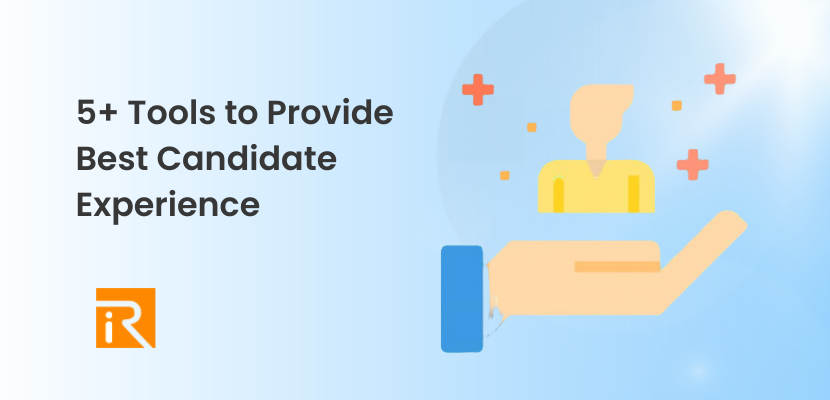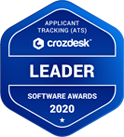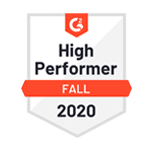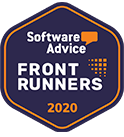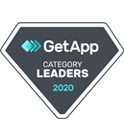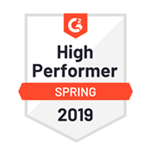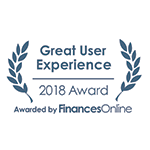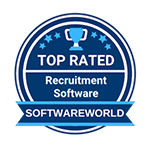What if I told you that your biggest competitor for top talent isn’t offering higher salaries or better benefits—they’re simply not making candidates feel like they’re applying to a black hole? While 52% of job seekers are walking away from offers due to terrible recruitment experiences, smart companies are turning their hiring process into their secret weapon.
A positive candidate experience directly impacts your bottom line. Companies that invested in creating favorable hiring experiences witnessed a remarkable 70% enhancement in the caliber of their hires, according to Glassdoor’s latest research. Meanwhile, organizations with poor candidate experiences lose an average of $4.1 million annually in lost productivity and reputation damage.
As we navigate 2025’s recruitment landscape, technology has become the great equalizer. The right tools can transform your hiring process from a candidate’s nightmare into their dream experience, setting the foundation for long-term employee engagement and retention.
The Evolution of Candidate Experience in 2025
The recruitment world has undergone a seismic shift. Gone are the days when candidates would tolerate weeks of radio silence or navigate cumbersome application processes. Today’s job seekers expect the same level of experience they receive from consumer brands—personalized, responsive, and seamless.
The pandemic accelerated digital transformation in recruitment, with 89% of organizations now using video interviewing tools. Remote hiring has become the norm rather than the exception, with 87% of employers filling at least four out of ten roles with international candidates. This global talent pool means competition for top candidates has intensified exponentially.
Artificial intelligence has emerged as the cornerstone of modern candidate experience strategies. From intelligent chatbots providing 24/7 support to predictive analytics forecasting candidate success, AI is reshaping every touchpoint in the hiring journey. However, the most successful organizations understand that technology should augment, not replace, the human element that makes recruitment truly effective.
What Makes a Satisfactory Candidate Experience?
Before diving into specific tools, let’s establish the foundation of candidate satisfaction. Research from TalentBoard and IBM reveals several key components that define an exceptional candidate experience:
Clear and realistic job descriptions that set appropriate expectations and attract diverse talent pools. Modern job descriptions go beyond listing requirements—they tell a story about your organization’s culture and the impact the role will have.
Simple and user-friendly application processes that respect candidates’ time and effort. With 89% of job seekers using mobile devices for job searches, mobile optimization isn’t optional—it’s essential.
Consistent, timely communication throughout the hiring process. Candidates who receive regular updates are 38% more likely to accept job offers, according to IBM’s research. This includes automated status updates, feedback after interviews, and clear timelines for decision-making.
Transparent evaluation processes that help candidates understand what to expect at each stage. This includes detailed interview prep materials, clear assessment criteria, and opportunities for candidates to ask questions and provide feedback.
Personalized interactions that demonstrate your organization values each candidate as an individual. This means moving beyond generic email templates to communications that reflect a genuine interest in their career journey.
With these principles established, let’s explore the tools that can help you deliver an outstanding candidate experience while streamlining your recruitment operations.
AI and Automation: The Game-Changers for Candidate Experience
Traditional resume screening consumes up to 23 hours per hire for recruiters. AI-powered screening tools have revolutionized this process, reducing screening time by 75% while improving accuracy and reducing unconscious bias.
Modern AI screening goes beyond keyword matching. Advanced algorithms analyze candidate profiles holistically, considering factors like career progression, skill development, and cultural fit indicators. Tools like Workable’s AI-powered screening and Phenom’s Fit Score use machine learning to continuously improve their matching accuracy based on your organization’s hiring patterns.
Key Benefits:
- Bias Reduction: AI systems, when properly trained, can minimize unconscious bias by focusing on objective qualifications rather than subjective factors
- Consistency: Every candidate receives the same level of evaluation based on predefined criteria
- Speed: Process hundreds of applications in minutes rather than days
- Quality: Identify top candidates who might be overlooked in manual screening
Implementation Tip: Start with a pilot program on high-volume positions to measure effectiveness before rolling out across all roles.
Intelligent Chatbots and Virtual Assistants
Recruitment chatbots have evolved from simple FAQ responders to sophisticated virtual assistants capable of conducting initial screenings and providing personalized candidate support. With 58% of candidates comfortable with chatbot assessments and 66% willing to let chatbots schedule interviews, these tools have gained significant acceptance.
Modern recruitment chatbots leverage Natural Language Processing (NLP) to provide human-like interactions across multiple channels. Platforms like Mya, Olivia by Paradox, and Jobpal can handle complex queries, schedule interviews, collect pre-screening information, and even conduct preliminary assessments.
Advanced Capabilities:
- 24/7 Availability: Candidates can get immediate responses regardless of time zones or business hours
- Multi-language Support: Serve diverse candidate populations in their preferred languages
- Integration Capabilities: Seamlessly connect with your ATS and other recruitment tools
- Learning Capabilities: Improve responses based on interaction patterns and feedback
The key to successful chatbot implementation is striking the right balance between automation and human touch. Use chatbots for initial engagement and routine tasks, but ensure smooth handoffs to human recruiters for complex discussions and relationship building.
Predictive Analytics for Candidate Success
Predictive analytics represents the frontier of data-driven recruitment. By analyzing historical hiring data, performance metrics, and external market factors, these tools can forecast candidate success with remarkable accuracy.
Organizations using predictive analytics report a 22% reduction in time-to-hire and 35% improvement in quality of hire metrics. These tools help recruiters identify candidates most likely to succeed in specific roles and cultural environments, reducing turnover and improving long-term employee satisfaction.
Key Applications:
- Success Probability Scoring: Rank candidates based on the likelihood of job success and retention
- Flight Risk Assessment: Identify candidates likely to accept offers versus those shopping around
- Compensation Optimization: Predict optimal offer packages to maximize acceptance rates
- Cultural Fit Analysis: Assess alignment with organizational values and team dynamics
Skills-Based Assessment Platforms
The shift toward skills-based hiring has accelerated dramatically in 2025, with 76% of employers now prioritizing demonstrated abilities over traditional credentials. Modern assessment platforms offer gamified, engaging ways for candidates to showcase their capabilities while providing recruiters with objective evaluation data.
Platforms like HackerEarth for technical roles, eSkill for general competencies, and Codility for software engineering provide comprehensive skill assessments that reduce time-to-hire while improving candidate engagement.
Assessment Innovation Trends:
- Gamification: Transform assessments into engaging challenges that candidates actually enjoy
- Real-world Simulations: Test candidates in scenarios that mirror actual job responsibilities
- Adaptive Testing: Adjust difficulty based on candidate responses for more accurate evaluation
- Soft Skills Assessment: Evaluate communication, problem-solving, and teamwork abilities
These tools don’t just evaluate candidates—they provide valuable feedback that helps candidates understand their strengths and development areas, contributing to a positive experience regardless of hiring outcomes.
Video Interview Intelligence
Video interviewing has evolved far beyond simple video calls. Modern interview intelligence platforms use AI to analyze verbal and non-verbal cues, providing recruiters with deeper insights into candidate suitability while ensuring more consistent evaluation processes.
HireVue’s AI-powered platform analyzes factors like word choice, speech patterns, and facial expressions to predict job performance. Spark Hire offers both live and one-way video interviews, allowing candidates to respond to questions at their convenience while giving recruiters the flexibility to review responses when it fits their schedule.
Intelligence Features:
- Structured Interview Frameworks: Ensure consistency across all candidate interactions
- Real-time Coaching: Provide interviewers with suggested follow-up questions and evaluation criteria
- Bias Detection: Flag potentially biased questions or evaluation patterns
- Performance Prediction: Use historical data to predict candidate success likelihood
Virtual Reality Assessment Tools
Virtual Reality (VR) represents the cutting edge of candidate assessment, offering immersive experiences that provide unprecedented insights into candidate capabilities and cultural fit. While still emerging, early adopters report significant improvements in hire quality and candidate engagement.
VR assessments allow candidates to experience realistic job scenarios, from customer service interactions to complex technical troubleshooting. This technology is particularly valuable for roles where hands-on experience is critical, such as healthcare, manufacturing, and customer-facing positions.
VR Assessment Benefits:
- Realistic Job Previews: Candidates experience actual work environments and challenges
- Stress Testing: Evaluate performance under realistic pressure and constraints
- Cultural Immersion: Experience team dynamics and organizational culture firsthand
- Accessibility: Provide consistent experiences regardless of geographic location
Building Long-term Candidate Relationships with CRM Technology
Candidate Relationship Management (CRM) systems have become essential for organizations serious about building sustainable talent pipelines. Modern recruitment CRMs go beyond basic contact management to offer sophisticated nurturing campaigns and relationship-building tools.
Platforms like SmashFly and Beamery provide comprehensive CRM capabilities that help organizations maintain relationships with passive candidates, alumni networks, and silver medalists from previous hiring processes.
Strategic CRM Capabilities:
- Automated Nurturing Campaigns: Keep candidates engaged with relevant content and opportunities
- Talent Community Building: Create specialized groups for different skill sets and career levels
- Alumni Network Management: Maintain relationships with former employees who might return or refer others
- Passive Candidate Activation: Re-engage previous applicants when new opportunities arise
Personalization at Scale
Modern recruitment CRM systems enable personalization at scale through dynamic content delivery and behavioral trigger-based communication. These systems track candidate preferences, engagement patterns, and career progression to deliver highly relevant communications.
Personalization Features:
- Dynamic Content: Automatically customize emails and job recommendations based on candidate profiles
- Behavioral Triggers: Send targeted communications based on candidate actions and engagement levels
- Career Journey Mapping: Track and respond to candidates’ career development over time
- Preference Centers: Allow candidates to control communication frequency and content types
This level of personalization ensures candidates feel valued and understood, significantly improving their perception of your organization even if they’re not immediately hired.
Streamlining Communication for Better Candidate Experience
Today’s candidates expect to communicate through their preferred channels, whether that’s email, SMS, social media, or video calls. Multi-channel communication platforms ensure consistent, responsive communication across all touchpoints.
SMS recruiting has gained particular traction, with text messages generating response rates 60 times faster than email. Platforms like TextRecruit integrate with existing ATS systems to enable personalized text communication while maintaining professional standards.
Communication Channel Optimization:
- SMS for Urgent Updates: Use text messages for time-sensitive communications like interview confirmations
- Email for Detailed Information: Provide comprehensive details about roles, company culture, and next steps
- Video Messages: Add personal touches with brief video introductions from hiring managers
- Social Media Engagement: Connect with candidates through professional networks and company social channels
Automated Interview Scheduling
Interview scheduling remains one of the most frustrating aspects of the candidate experience, with an average of 8-12 email exchanges required to schedule a single interview. Self-service scheduling tools eliminate this friction while respecting everyone’s time constraints.
Modern scheduling platforms like Calendly and integrated ATS scheduling tools allow candidates to book interview slots directly based on the interviewer’s availability. These systems automatically send confirmations, reminders, and directions while syncing with all relevant calendars.
Scheduling Automation Benefits:
- 80% Reduction in Scheduling Time: Eliminate back-and-forth email exchanges
- Improved Candidate Satisfaction: Provide immediate scheduling gratification
- Reduced No-shows: Automated reminders and easy rescheduling options
- Global Accessibility: Accommodate candidates across different time zones seamlessly
Measuring and Optimizing Candidate Experience
Candidate Experience Surveys and Feedback
Continuous improvement requires consistent measurement. Candidate experience surveys provide direct insights into your recruitment process effectiveness while demonstrating your commitment to candidate satisfaction.
Research shows that organizations using candidate feedback surveys see a 13% increase in application completion rates and over 30% reduction in time-to-hire. These surveys should be deployed at multiple touchpoints throughout the candidate journey.
Survey Implementation Strategy:
- Post-Application Surveys: Gather immediate feedback on application process usability
- Post-Interview Feedback: Understand candidate perceptions of interview quality and preparation
- Final Decision Surveys: Collect insights from both accepted and declined candidates
- Long-term Follow-up: Check in with new hires after 90 days to assess overall experience
Recruitment Analytics Dashboards
Data-driven recruitment requires comprehensive analytics that track both efficiency metrics and experience quality indicators. Modern ATS and recruitment platforms provide sophisticated dashboards that help identify bottlenecks and optimization opportunities.
Key Metrics to Track:
- Time-to-Hire: Monitor process efficiency across different roles and departments
- Candidate Drop-off Rates: Identify where candidates abandon the process
- Quality of Hire: Track new employee performance and retention rates
- Diversity and Inclusion: Ensure equitable experiences across all candidate demographics
- Candidate Net Promoter Score (NPS): Measure the likelihood of candidates recommending your organization
These analytics enable continuous optimization of your candidate experience strategy while demonstrating ROI to stakeholders.
How to Successfully Implement Candidate Experience Tools?
Step-by-Step Implementation Framework
Successful tool implementation requires strategic planning and change management. Organizations that follow structured implementation approaches see 40% higher adoption rates and faster time-to-value.
Phase 1: Assessment and Planning (Weeks 1-2)
- Conduct current state analysis of candidate experience touchpoints
- Survey existing candidates and recent hires to identify pain points
- Map candidate journey and identify automation opportunities
- Define success metrics and ROI expectations
Phase 2: Tool Selection and Integration Planning (Weeks 3-4)
- Evaluate tools based on specific requirements and integration capabilities
- Conduct vendor demonstrations and pilot programs
- Plan integration with existing systems (ATS, HRIS, communication tools)
- Develop training materials and a change management strategy
Phase 3: Pilot Implementation (Weeks 5-8)
- Deploy tools with limited user groups and role types
- Gather feedback from both recruiters and candidates
- Refine processes and configurations based on initial results
- Document best practices and lessons learned
Phase 4: Full Rollout and Optimization (Weeks 9-12)
- Expand tool usage across all recruitment activities
- Monitor key metrics and adjust strategies as needed
- Provide ongoing training and support to recruitment teams
- Establish regular review cycles for continuous improvement
ROI Measurement and KPIs
Measuring ROI from candidate experience tools requires tracking both quantitative metrics and qualitative improvements. Organizations typically see positive ROI within 6-12 months of implementation.
Financial ROI Indicators:
- Reduced Time-to-Hire: Calculate cost savings from faster hiring cycles
- Improved Quality of Hire: Measure reduced turnover and increased productivity
- Recruiter Efficiency: Track increased capacity and reduced manual work
- Candidate Conversion Rates: Monitor improved offer acceptance rates
Experience Quality Indicators:
- Candidate Satisfaction Scores: Track NPS and experience ratings
- Employer Brand Metrics: Monitor online reviews and social media sentiment
- Referral Rates: Measure increased employee and candidate referrals
- Repeat Applicant Rates: Track candidates who reapply for different roles
The Future of Candidate Experience Technology
Emerging Technologies to Watch
As we look toward 2026 and beyond, several emerging technologies promise to further transform candidate experience:
Blockchain for Credential Verification will streamline background checks and education verification, reducing time-to-hire while improving security and accuracy. Candidates will maintain portable credential wallets that can be instantly verified by potential employers.
Advanced Emotion AI will analyze candidate sentiment and engagement levels throughout the recruitment process, enabling real-time adjustments to improve experience quality. These systems will detect frustration, confusion, or disengagement, prompting immediate intervention.
Augmented Reality (AR) Integration will enable virtual office tours, immersive job previews, and enhanced remote interview experiences. Candidates will be able to experience your workplace culture and environment regardless of geographic location.
Voice AI for Initial Screening will provide natural, conversational screening experiences that feel more personal than traditional questionnaires while maintaining the efficiency of automated systems.
Preparing for 2026 and Beyond
Organizations that want to stay ahead must develop technology roadmaps that anticipate future candidate expectations while building scalable, flexible systems.
Strategic Preparation Steps:
- Invest in Integration-Friendly Platforms: Choose tools that can easily connect with emerging technologies
- Build Data Infrastructure: Ensure you can collect, analyze, and act on candidate experience data at scale
- Develop Change Management Capabilities: Build organizational capacity for continuous technology adoption
- Focus on Candidate-Centric Design: Prioritize user experience in all technology decisions
RecruitBPM: Your Complete Candidate Experience Solution
While individual point solutions can address specific challenges, the most effective approach combines multiple tools in an integrated platform. RecruitBPM offers a comprehensive solution that includes:
AI-Powered Automation that handles routine tasks while maintaining personal touches throughout the candidate journey. Our intelligent systems learn from your hiring patterns to continuously improve matching accuracy and candidate engagement.
Integrated Communication Tools that enable seamless multi-channel communication, automated scheduling, and personalized messaging at scale. Candidates receive timely, relevant updates through their preferred communication channels.
Advanced Analytics and Reporting that provide real-time insights into candidate experience quality and recruitment efficiency. Track key metrics, identify optimization opportunities, and demonstrate ROI to stakeholders.
Scalable Architecture that grows with your organization, from small recruiting teams to enterprise-level operations. Our platform adapts to your unique requirements while maintaining consistent candidate experience quality.
Conclusion: Investing in Tomorrow’s Talent Today
The candidate experience landscape will continue evolving rapidly, driven by advancing technology and changing candidate expectations. Organizations that invest in comprehensive candidate experience tools today will build competitive advantages that compound over time.
Remember that technology should enhance, not replace, the human elements that make recruitment effective. The most successful organizations use tools to eliminate friction and create space for meaningful human connections that drive both candidate satisfaction and hiring success.
Start by assessing your current candidate experience, identifying the biggest pain points, and implementing solutions that address your most critical challenges. Whether you begin with AI-powered screening, automated communication, or comprehensive analytics, the key is to start building your candidate experience capability now.
The future belongs to organizations that can attract, engage, and hire top talent efficiently while providing experiences that candidates enthusiastically recommend to their networks. By leveraging the right combination of tools and maintaining focus on human-centered design, you can transform your recruitment process into a true competitive advantage.
Ready to revolutionize your candidate experience? Explore how RecruitBPM’s integrated platform can help you implement these tools seamlessly while providing the support and expertise you need to succeed. Schedule a demo today to see how our AI-powered solutions can transform your hiring process and improve candidate satisfaction across every touchpoint.


